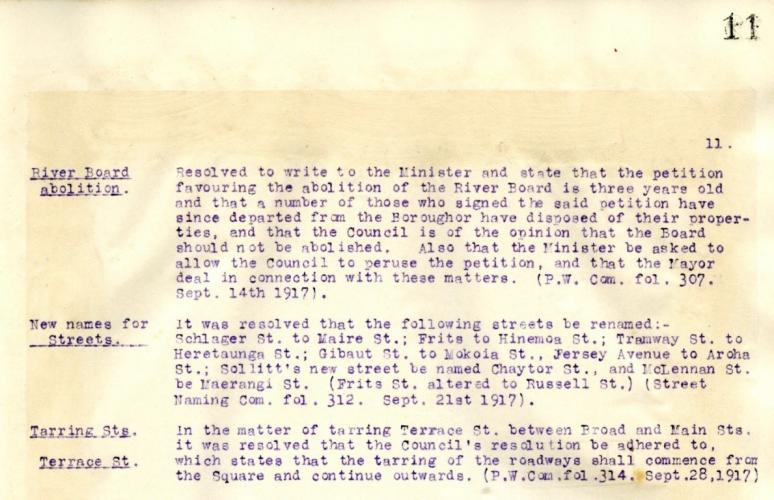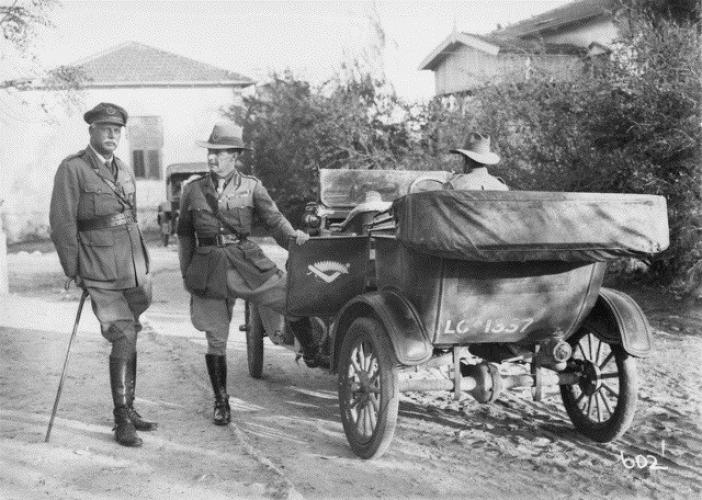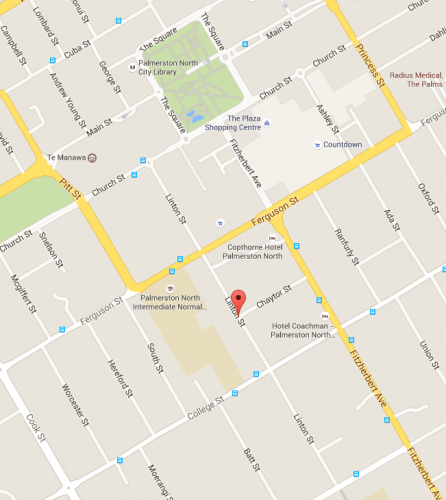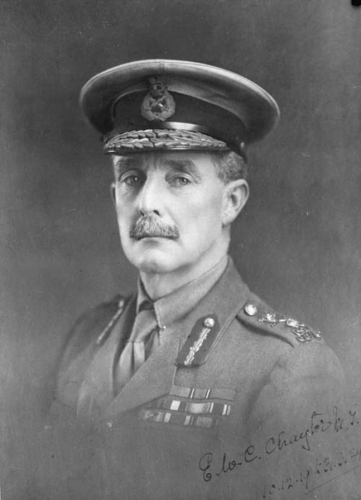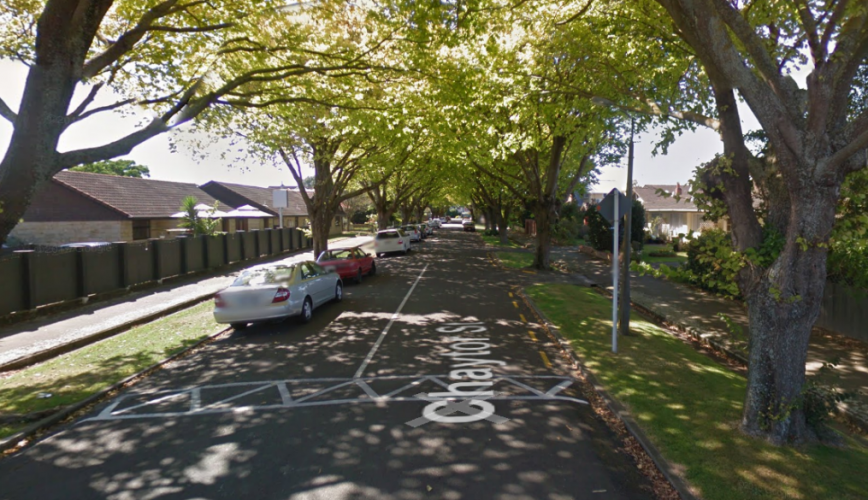034 Chaytor Street Palmerston North, street scene 2017
Reason for the name
Chaytor Street is named after Major General Sir Edward Walter Clervaux Chaytor. Edward Chaytor was a natural choice: he and his wife resided in the city, he had distinguished himself at Gallipoli and was the only New Zealander to exercise divisional command of ANZAC forces.
New Zealand, being a British colony dependent on trade with its motherland, saw a massive wave of patriotism sweep the nation upon the outbreak of war in August 1914. Following the battles at Gallipoli and on the Western Front, anti-German sentiment was high, leading to several motions being put forth to the Palmerston North City Council to re-name several streets with German (or German-sounding) names. Other streets were also caught up in this patriotic fervour seeking to replace the present street names with titles that were explicitly New Zealand linked or named after individuals associated with the war effort. One such example was the as yet unnamed street developed by Mr Sollitt, lying off the main road via Fitzherbert Avenue. Edward Chaytor was a natural choice: he and his wife resided in the city, had distinguished himself at Gallipoli and was the only New Zealander to exercise divisional command of ANZAC forces. The motion was tabled by the Street Naming Committee on 21 September 1917 and was passed by Council on 18 December 1917.
Chaytor Street intersects with two other streets, in the west by Linton Street and the east by Fitzherbert Avenue. The entire length of the street is lined with oak trees on both sides. There are 2 motels and a motor inn along the street, with the most prominent house being 18 Chaytor Street, a large ex-hostel with 10 rooms.
Author: Evan Greensides, Research Assistant – Archives, Palmerston North Libraries and Community Services
Major General Sir Edward Walter Clervaux Chaytor
Edward Walter Clervaux Chaytor was born in Motueka, New Zealand, on 21 June 1868, the first child of Emma Fearon and her husband, John Clervaux Chaytor, a runholder. After leaving school, Chaytor took up sheepfarming on the family property at Spring Creek near Blenheim. In 1886 he enlisted in the Marlborough Hussars and was commissioned as a lieutenant in 1889, making captain in 1893. On 17 October 1898 Chaytor married a widow, Louisa Jane Hiley, eventually having three children with her.
Early in 1900 Chaytor left for the South African War as part of the Third (Rough Riders) Contingent of New Zealand Mounted Rifles where he suffered a severe gunshot wound which shattered his right thigh-bone. Although he later re-joined his unit and took part in several engagements, the wound continued to give him trouble and Chaytor, now a major, returned to New Zealand and took sick leave in May 1901. Although considered for the job of Mounted Instructor, Chaytor returned to South Africa in February 1902 with the Eighth Contingent as a lieutenant colonel commanding the South Island Regiment. Chaytor’s tour of duty was cut short when the Boer War ended abruptly the same month he arrived.
After the Boer War ended in 1902, Chaytor was appointed to the headquarters’ staff of the Defence Department with the same rank of lieutenant colonel. He was initially Assistant Adjutant-General, later attending the staff college at Camberley. He later became Director of Military Training and Education before being promoted to colonel in 1911 and, from late 1910, commanded the Wellington Military District from its headquarters at Palmerston North. He was appointed adjutant general in July 1914.
At the outbreak of the First World War, Chaytor was transferred to the staff of the New Zealand Expeditionary Force (NZEF) as the principal personnel and logistics officer. He played a pivotal role in the dispatch of New Zealand troops to German Samoa in August 1914, as well as the embarkation of the main body of the NZEF from Wellington in October. At Gallipoli, Chaytor was one of the first New Zealand officers ashore, retaining administrative posts until suffering an arm and head wound, eventually being evacuated to England.
Following his recovery from these wounds, Chaytor was given command of the New Zealand Mounted Rifles Brigade in Egypt. The brigade remained as part of the Desert Column of the Egyptian Expeditionary Force when the rest of the New Zealand forces sailed for France early in 1916. Chaytor was promoted to brigadier and became the senior New Zealand officer for that theatre of the war. Chaytor then took over the Australian and New Zealand Mounted Division, including a promotion to major general, thus becoming the first, and only, New Zealander ever to exercise command of an ANZAC force at divisional level. In recognition of his achievements and before the First World War had ended, Chaytor was knighted in late-1918.
Chaytor returned to Wellington in 1919 and took the appointment of Chief of General Staff, helping to maintain cohesion of the armed forces as the returning force was steadily wound down. Chaytor retired in 1924. Soon after his retirement he sailed for England where he lived with his family until his death at South Kensington in London on 15 June 1939.
Awards and Medals
Knight Commander of the Most Distinguished Order of St Michael and St George (KCMG)
Knight Commander of the Royal Victorian Order (KCVO)
Companion of the Most Honourable Order of the Bath (CB)
Volunteer Officer's Decoration (VD)


